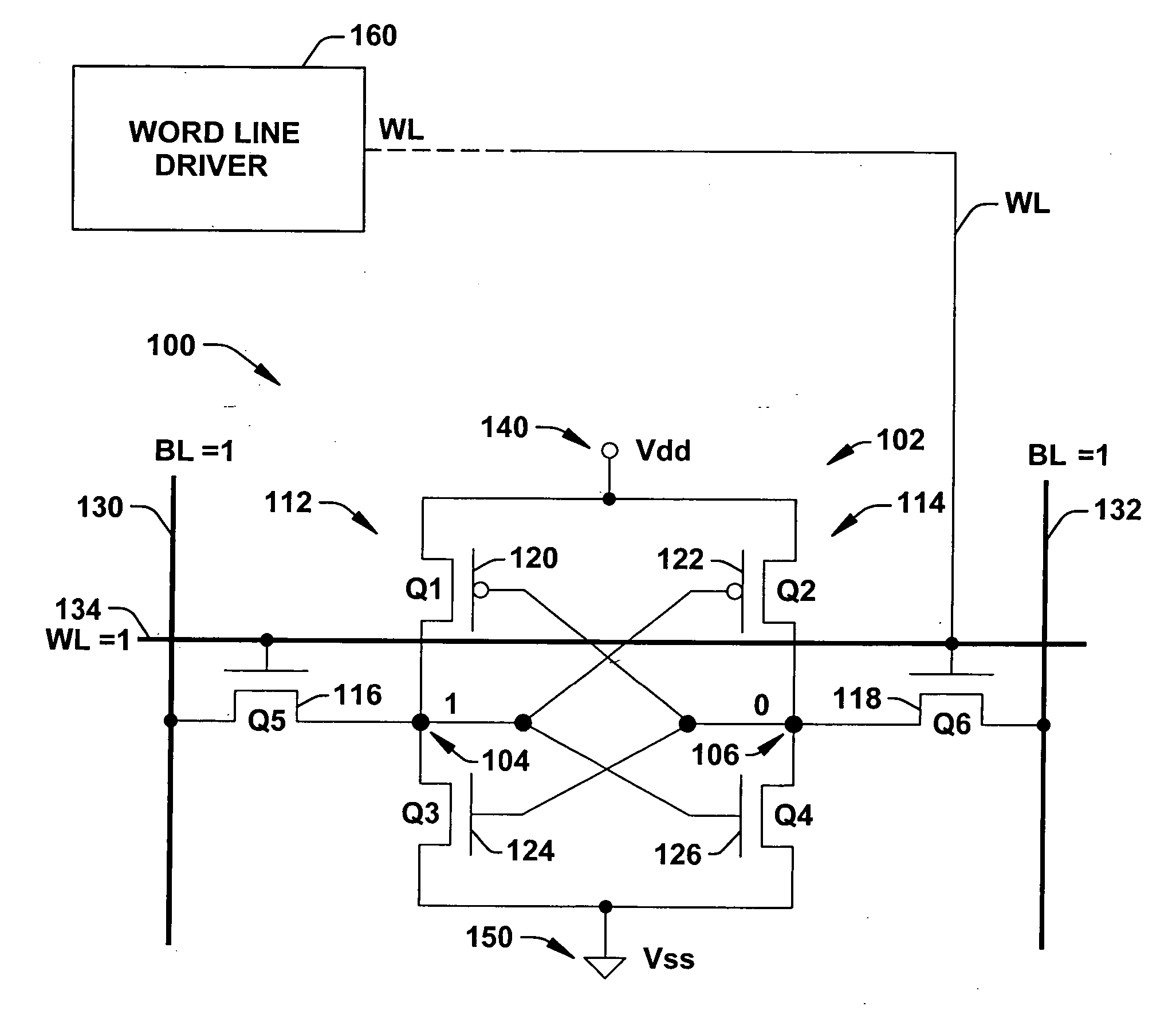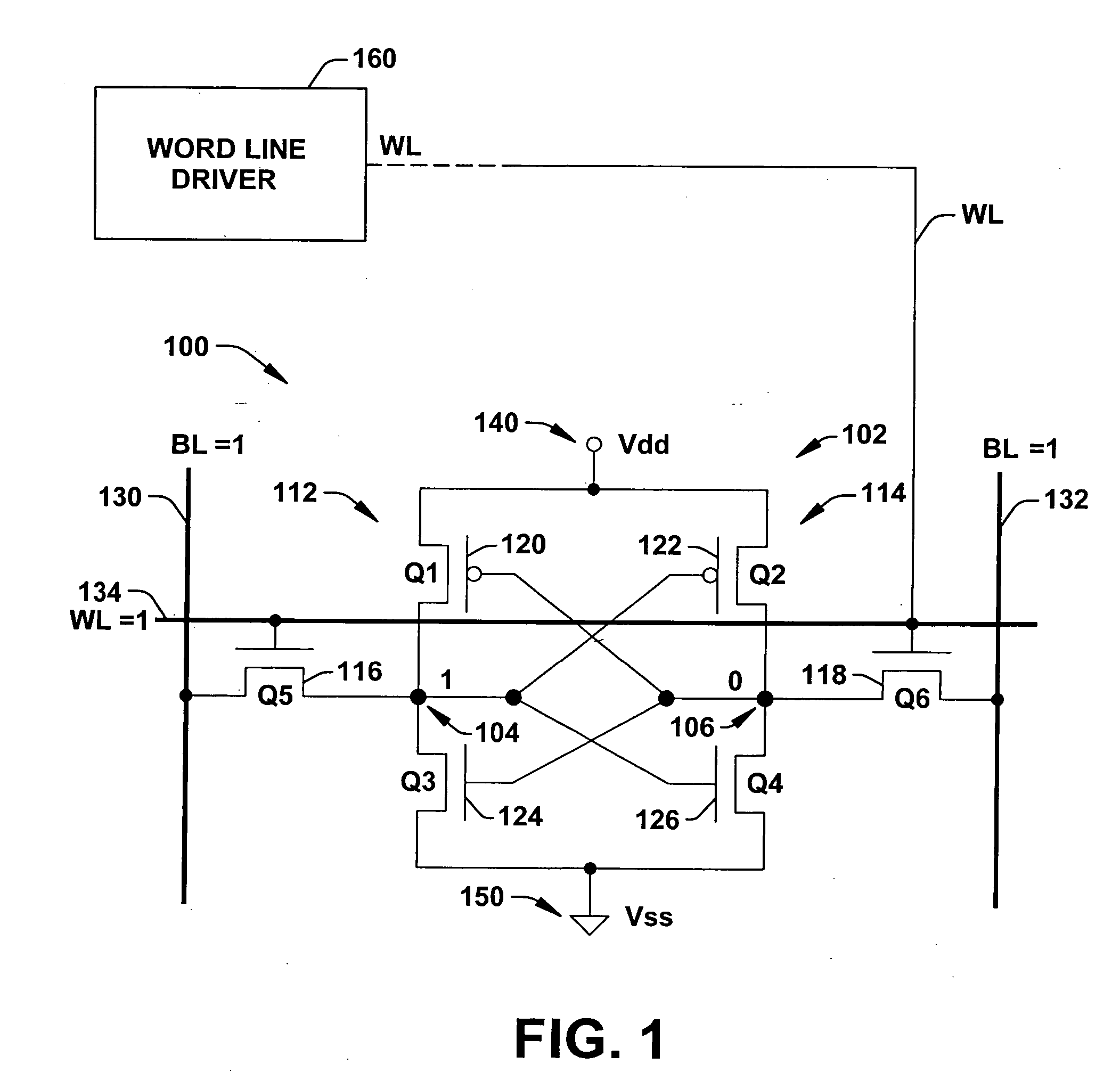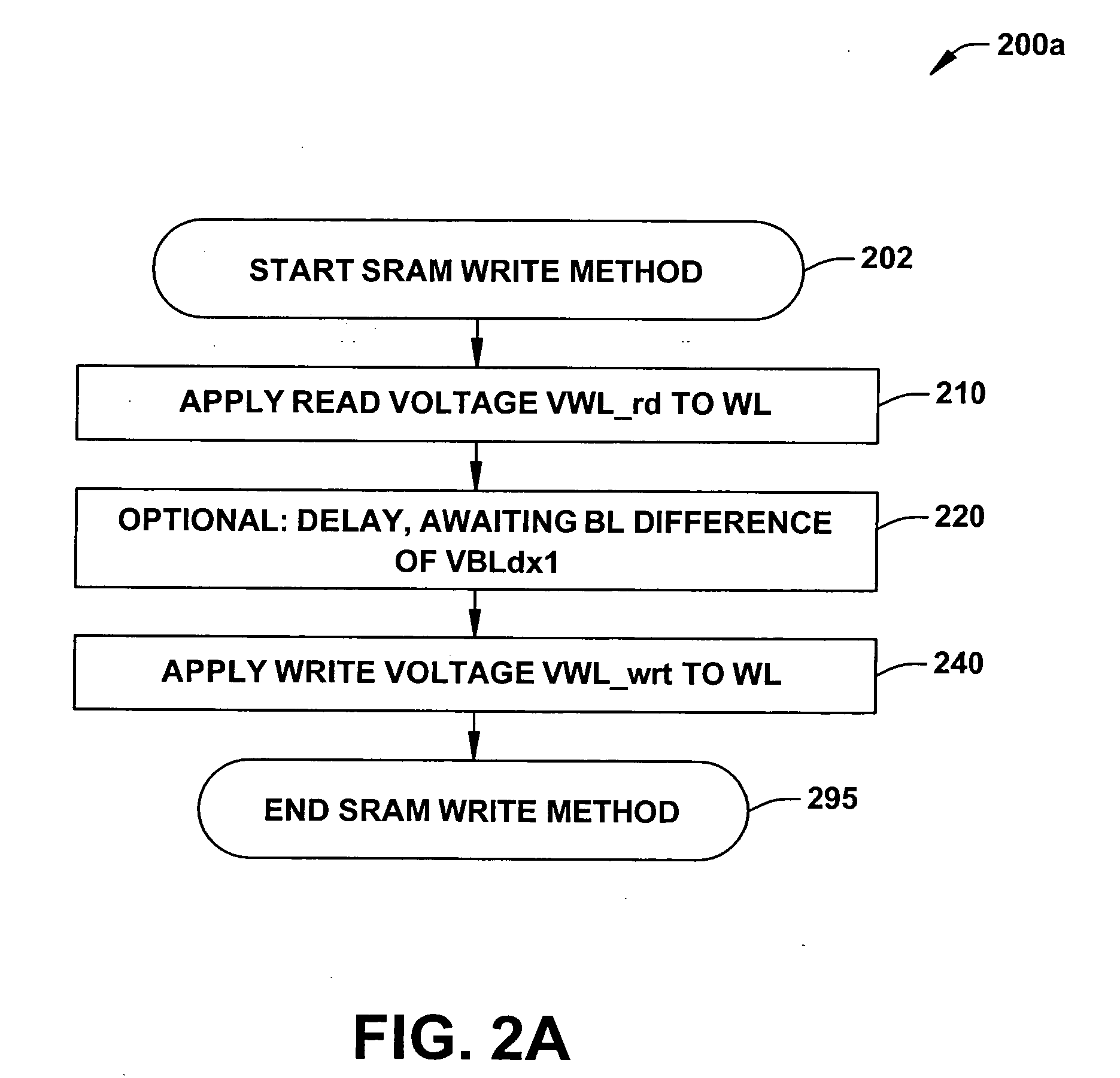Memory array with a delayed wordline boost
a memory array and wordline boost technology, applied in the field of memory arrays with delayed wordline boosts, can solve the problems of reducing the snm and becoming increasingly difficult to design compact sram cells, and achieve the effect of improving static noise margin and minimal risk of data upset during write operations
- Summary
- Abstract
- Description
- Claims
- Application Information
AI Technical Summary
Benefits of technology
Problems solved by technology
Method used
Image
Examples
Embodiment Construction
[0029] The present invention will now be described with reference to the attached drawings, wherein like reference numerals are used to refer to like elements throughout. The invention provides an improved method and system for writing to an SRAM memory cell to increase static noise margin (SNM), while minimizing the risk of data upsets during write operations.
[0030] Because of transistor scaling trends, however, it becomes increasingly difficult to design a compact SRAM cell that has both adequate static noise margin (SNM) and adequate Vtrip over the desired operating range of temperature, bias conditions, and process variations.
[0031] The inventors of the present invention have appreciated that increasing the voltage on the wordline (WL) (e.g., a boosted wordline) would improve the Vtrip, but may then subject the unaddressed cells in the accessed row to a higher risk of upset. The inventors of the present invention have also discovered and appreciated that this increased risk of...
PUM
 Login to View More
Login to View More Abstract
Description
Claims
Application Information
 Login to View More
Login to View More - R&D
- Intellectual Property
- Life Sciences
- Materials
- Tech Scout
- Unparalleled Data Quality
- Higher Quality Content
- 60% Fewer Hallucinations
Browse by: Latest US Patents, China's latest patents, Technical Efficacy Thesaurus, Application Domain, Technology Topic, Popular Technical Reports.
© 2025 PatSnap. All rights reserved.Legal|Privacy policy|Modern Slavery Act Transparency Statement|Sitemap|About US| Contact US: help@patsnap.com



